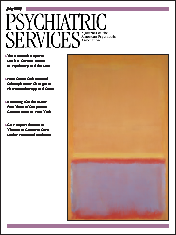Textbook of Geriatric Psychiatry, Third Edition
This third edition of American Psychiatric Publishing's Textbook of Geriatric Psychiatry deals with the enormous expansion of scientific knowledge about aging and psychiatric disorders of late life, including advances in research, since the publication of the second edition in 1996. The textbook is divided into five parts. It begins with the review of the current science of geriatric psychiatry, continues with recommendations on diagnostic interviewing in late life, and is followed by a clinical presentation of psychiatric disorders that occur in this period of human life and their treatment. The book concludes with the coverage of legal, ethical, and policy issues in past and future geriatric psychiatry. The book's 54 contributors are distinguished psychiatrists as well as researchers from relevant biomedical and behavioral disciplines.
In the year 2000, of the more than 275 million people in the United States, 35 million (or 13 percent of the population) were aged 65 years or older. This number is expected to increase to 70 million by 2030. The first known practical manual on the problems of aging was published in Latin by G. Zerbi in 1482. This manual stated that although it is impossible to prevent aging, it is possible to combat and resist it through diet, rest, and exercise. In 1990 it was suggested that approximately 35 percent of the factors that influence our life span are inherited. So far, a satisfactory, unified theory of aging does not exist, and so-called normal events that result in biological, social, and behavioral changes among older adults require further exploration.
Textbook on Geriatric Psychiatry states that a decline in cognitive functioning with age occurs in several areas, including intelligence, ability to maintain attention, memory, learning, visuospatial functions, and psychomotor functions, but these factors do not occur uniformly across all areas. Elderly individuals also develop significant changes in vision and hearing. With aging, the heart, blood vessels, and respiratory, gastrointestinal, hematologic, immune, renal, and endocrine systems also develop considerable changes in their functional ability, along with changes in pharmacokinetics and pharmacodynamics. In addition, there are "geriatric syndromes," including falls, urinary incontinence, frailty, polypharmacy, and, among many elderly persons, the development of dementia. Today, in geriatric psychiatry, the study of genetics and genetic testing is a rapidly changing field. Along with gene-specific treatments, these changes may improve the accuracy of diagnosis. Patients who are 85 or older—described as the "fourth age"—and who develop a large portion of observed age differences are no longer considered as being in a province of "happy gerontology." For all elderly people who reach this extreme age, the text recommends that the psychiatric interview be paced so that the older person has enough time to respond to the questions asked.
A chapter on cognitive disorders discusses dementia and delirium, including Alzheimer's disease, vascular dementia, dementia with Lewy bodies, frontotemporal dementia, dementia due to normal-pressure hydrocephalus, hypothyroidism, vitamin B-12 deficiency, Creutzfeld-Jacob disease, neurosyphylis, amnesic disorder, alcoholic dementia, and Wernicke-Korsakoff syndrome. Movement disorders among elderly persons need to be distinguished from changes associated with the normal aging process. Also covered in the text are mood disorders, followed by chapters on schizophrenia and paranoid disorders as well as anxiety and panic disorders. Of interest is the introduction of the diagnostic term "very late onset schizophrenia-like psychosis" for patients whose psychosis began after age 60. A comparison of risk factors for and clinical features of the "early-onset," "late-onset," and "very late onset schizophrenia-like psychosis" will be helpful for clinicians.
Part IV of the textbook deals with the treatment of psychiatric disorders and consists of psychopharmacology, electroconvulsive therapy (ECT), diet, exercise, and psychotherapy, including working with the family, treatment in a nursing home, and continuum of care. It is important for clinicians to note that older patients may benefit most from a shift away from conventional antipsychotic drugs such as chlorpromazine, haloperidol, and perphenazine, because these drugs have been associated with a 2.4-fold increase in sudden cardiac death, and older patients are prone to developing extrapyramidal symptoms or tardive dyskinesia when treated with drugs that mainly block dopamine D2-receptors. Extrapyramidal symptoms are associated with an increase in cognitive impairment, decline in activities of daily living, and falls. The choice of treatment with specific nonconventional antipsychotics is preferred.
The textbook concludes with several special topics concerning legal, ethical, and policy issues. The final chapter describes the path of geriatric psychiatry in the United States and is written by the textbook's editors. They emphasize the model of Baltes and Baltes (1), which is based on recognition of the realities of aging: late-life development is a specialized and age-graded adaptation, elderly persons experience a reduction in general reserve capacity, and losses occur in specific functions. All the information is presented in a well-written format and has the potential to be helpful to any practicing psychiatrist, resident, or student.
Dr. Sheikman lives in Shrewsbury, Massachusetts.
1. Baltes PB, Baltes MM: Successful Aging: Perspectives From The Behavioral Sciences. Cambridge, England, Cambridge University Press, 1993Google Scholar



